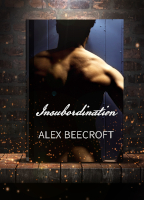A light discourse.
So, it’s worth thinking about light, if you’re writing a historical novel, particularly if you live and/or were brought up in a city. We moderns are as unaware of light as a fish is of water. We switch it on where we need it, and the night goes away in an even wash of colourless white illumination. Even when we switch it off, outside the windows the lamps keep shining and all our streets are yellow and the shadows are madder-brown.
Photographers and painters spend their lives acutely aware of the light – it’s angle, its intensity and its colour, and the fall of the places where it is absent. But writers have a tendency to ignore it, because we are less visual beings and we’re too busy worrying about plot and characterisation, and wondering if we’ve got too much description rather than too little.
I think that’s a shame, because if you’ve ever sat in a room illumined only by candlelight, you’ll know that it’s an entirely different experience from sitting in the same room under electric light. There’s a sense of human impermanence and fragility from the fact that the light is so vulnerable – too sharp a draught and those little flames that flicker so brightly on the end of their wicks could snuff out. The darkness is behind them all, waiting for its chance, and it can be felt, like a prowling presence just outside the protective circle.
Candlelight is also far more beautiful than electric. The colour of candlelight is the colour of the light before a storm – thick, golden and sweet. Garments look richer in it, faces look smoother, soft-focus, dusted with gilding. It’s a warm light that encourages quiet voices and secrets, intimacy and intrigue. And it casts more shadows.
Out there, beyond the charmed circle, outside the light, who knows what lurks? Even the rooms of your house fill up with hidden things, whether that be murder clues or secret trysts or supernatural terrors.
If you’ve ever walked outside, in the countryside, where there is no light pollution, on an overcast night, on your own, you’ll know you can feel buried alive even in the open air. And if you’ve done the same under a full moon, when the sky is indigo and green as a bad bruise, and all the world is tricksy silver-blue, you’ll appreciate how hard it was for our ancestors not to believe in elves and wights and headless horsemen. Under that lunatic light, you can practically see them wherever you look.


That’s one of the parts I love best while writing my story which is set in the 16th century. Describing how a single candle casts a pool of light and the dark corners of a room where the light does not reach. And how, in bed at night with the light on, your world is the whole room. But when the light is switched off that world shrinks to the confines of your bed. And I remember the delicious fear I felt while walking down a country road in the middle of Dartmoor. The all encompassing blackness, but looking up you see the stars with an absolute clarity you just don’t have in the city. I enjoyed that. Thank you. 🙂
Thanks Grace 🙂 Yes, I think that half of the battle in learning to write description comes in learning to see things first. (And then in learning to imagine what would happen if those things were changed. The modern world has made so certain that you’re never without the things you need most, that perhaps you learn to value them less.
Lovely! And thought-provoking.
Thanks Syd! This post brought to you by a recent power cut at our house 😉
This is something I wish more writers were conscious of. It’s not uncommon for me to have what I call a “Hey, wait a minute!” moment, when an author has established that a given setting is dark, and a few pages later the hero is looking at something. Something he shouldn’t be able to see. I visualize as I read, and often catch things like that.
Ah, I won’t say that I’m not guilty of that myself! It’s so easy to get caught up in telling the story that you forget the details – which is why it’s so brilliant to have someone to tell you “hold on a moment, you said it was dark.” I definitely share that authorial tendency to go “ooh, shiny!” and be distracted from everything I’ve already set up to go after the next cool moment.